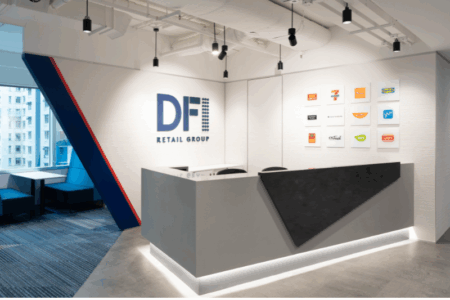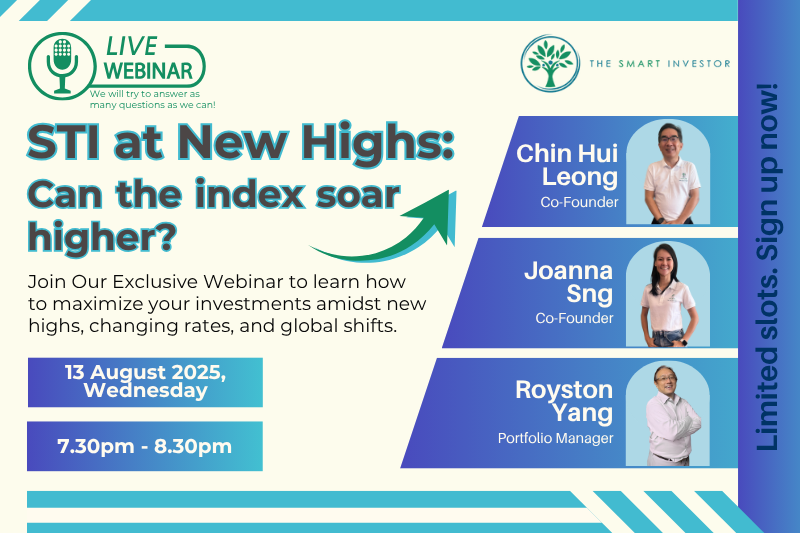June saw a flurry of activity, filled with market excitement spurred by significant announcements from leading US companies.
We have compiled four key highlights, focusing particularly on the largest US technology stocks.
Meanwhile, noteworthy developments were also observed in Singapore’s market.
Most importantly, Singapore is looking to boost its competitiveness in the technology sector.
This is a timely move, given the current dominance of technology, underscored by the NASDAQ Composite Index reaching a new all-time high this June.
Soilbuild Construction Group (SGX: S7P)
Soilbuild Construction Group (SCG) announced that it clinched a S$645.7 million contract for the construction of the PSA Supply Chain Hub @ Tuas.
This project includes the construction of warehouse buildings, gate buildings, main intake substations, and ancillary buildings at Tuas Port in Singapore.
The development will form a part of the Tuas Port and will be built to achieve the Green Mark Platinum Super Low Energy, which is an eco-sustainable rating awarded by the Building and Construction Authority (BCA).
This rating will only be awarded to projects that achieve at least 60% energy savings.
By clinching this contract, SCG’s order book has been elevated to S$1.2 billion, a first for the company.
Apple (NASDAQ: AAPL)
Apple unveiled exciting updates during its recent Worldwide Developers Conference (WWDC) presentation earlier this week.
The iPhone maker is making a push into the artificial intelligence (AI) realm in a bid to catch up with rivals within the same space.
Branded as “Apple Intelligence”, AI will now be incorporated into the iPhone’s features, including a partnership with OpenAI’s ChatGPT.
This technology can help to summarise text, create original images, and retrieve data from any of the apps within the phone based on a query.
Apple’s digital assistant, Siri, will also receive a revamp and users can now type messages rather than just speaking to it.
Apple Intelligence features will begin rolling out later this year but users will need to have at least an iPhone 15 Pro or Pro Max to operate them.
This requirement could result in one of the largest replacement cycles for old iPhones that the company has witnessed.
In addition, the new iOS 18 and iPadOS will also have upgraded features that improve customisation, productivity, and communication.
Meanwhile, the company’s new Vision Pro headset, which allows users to experience spatial computing, saw its first major update with visionOS 2.
Some new features include the ability to turn normal photos into 3D spatial pictures and new hand gestures for opening the Home View and Control Centre.
Vision Pro also goes on sale internationally with preorders beginning in China, Hong Kong, Singapore and Japan on 13 June with sales to start on 28 June.
Sales will commence in countries such as Australia, Canada, France, Germany and the UK from 12 July.
Elsewhere, the Apple Watch will have additional health capabilities such as enhanced pregnancy tracking and an app that shows at-a-glance vital statistics.
Investors are feeling excited about these new announcements and pushed shares of the Cupertino-based company to a new all-time high close of US$213.07 on 12 June.
Nvidia (NASDAQ: NVDA)
Nvidia continues to impress with CEO Jensen Huang announcing plans to upgrade its artificial intelligence (AI) accelerators every year.
The stock has shot up by 154% year to date and surpassed the US$3 trillion market capitalisation mark, making the graphics processing unit (GPU) manufacturer the second most valuable company in the world behind Microsoft (NASDAQ: MSFT).
Huang announced a Blackwell Ultra chip for 2025 and a next-generation platform in development named Rubin in 2026.
The company also introduced new tools and software models on the eve of the Computex trade show held in Taiwan.
Huang believes that generative AI will herald a new industrial revolution and expects this new technology to play a major role in the shift towards personal computers.
Nvidia is also attempting to diversify its customer base beyond the crop of cloud computing giants to reduce reliance on these behemoths.
A larger swath of companies in various sectors such as shipbuilders and drug developers are well-positioned to embrace AI.
Huang’s vision of accelerated computing can help to deliver 98% cost savings and use 97% less energy if Nvidia’s technology is used.
Meanwhile, Nvidia is also releasing a new design for server computers built on its chips.
This programme, called MGX, allows companies such as Hewlett-Packard (NYSE: HPQ) and Dell Technologies (NYSE: DELL) to market faster with products used by corporations and government agencies.
Nvidia also provides a service called Nvidia Inference Microservices, or NIM, which supplies “AI in a box” – companies that deploy these services will have to pay Nvidia a usage fee.
Huang also announced the Omniverse and promoted the use of digital twins to conduct more sophisticated weather pattern modelling and other complex tasks for Earth.
Quantum technology and data centres
As part of its National Quantum Strategy, Singapore will invest around S$300 million to pursue quantum technology.
This strategy was launched by Deputy Prime Minister Heng Swee Keat on the first day of the ATxSummit, a flagship technology event organised by the Infocomm Media Development Authority (IMDA).
The investment will be made in four areas, namely quantum research and development, engineering capabilities, talent, and partnerships.
This initiative is part of Singapore’s plan to build quantum computers, a type of technology that harnesses the laws of quantum mechanics to solve problems that are too tough for standard computers.
Higher processing capabilities can enable the discovery of complex drug molecules and spur the training of advanced artificial intelligence (AI) models, among other uses.
Mr Heng also announced the launch of the green data centre roadmap which will add 300 MW of additional capacity in the short term, with the potential to add 200 MW or more in the future.
With most of Singapore’s digital economy growth dependent on data centres, this asset class is essential to Singapore’s ambition to produce a vibrant digital ecosystem.
The information communication sector alone accounted for 17% of the country’s gross domestic product, underscoring the importance of building and growing this sector into the future.
First-time investors: We’ve finally released our Beginner’s Guide. Read it in an afternoon, follow the principles, pick an investing style and buy your first SGX stocks within the next few hours! Click here to download it for free.
Follow us on Facebook and Telegram for the latest investing news and analyses!
Disclosure: Aw Kai Rui does not own any of the stocks mentioned in this article.






